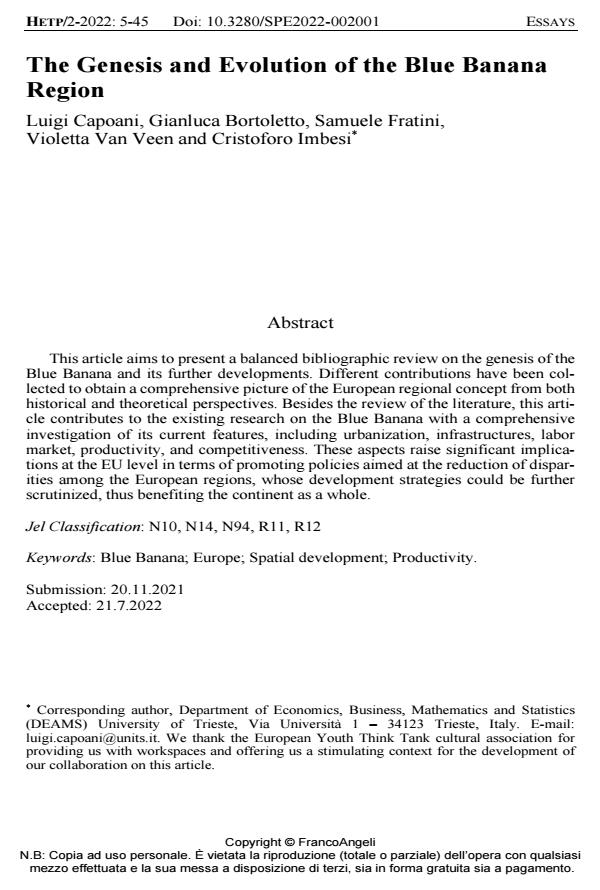The Genesis and Evolution of the Blue Banana Region
Titolo Rivista HISTORY OF ECONOMIC THOUGHT AND POLICY
Autori/Curatori Luigi Capoani, Gianluca Bortoletto, Samuele Fratini, Violetta Van Veen, Cristoforo Imbesi
Anno di pubblicazione 2022 Fascicolo 2022/2
Lingua Inglese Numero pagine 41 P. 5-45 Dimensione file 1359 KB
DOI 10.3280/SPE2022-002001
Il DOI è il codice a barre della proprietà intellettuale: per saperne di più
clicca qui
Qui sotto puoi vedere in anteprima la prima pagina di questo articolo.
Se questo articolo ti interessa, lo puoi acquistare (e scaricare in formato pdf) seguendo le facili indicazioni per acquistare il download credit. Acquista Download Credits per scaricare questo Articolo in formato PDF

FrancoAngeli è membro della Publishers International Linking Association, Inc (PILA)associazione indipendente e non profit per facilitare (attraverso i servizi tecnologici implementati da CrossRef.org) l’accesso degli studiosi ai contenuti digitali nelle pubblicazioni professionali e scientifiche
This article aims to present a balanced bibliographic review on the genesis of the Blue Banana and its further developments. Different contributions have been collected to obtain a comprehensive picture of the European regional concept from both historical and theoretical perspectives. Besides the review of the litera-ture, this article contributes to the existing research on the Blue Banana with a comprehensive investigation of its current features, including urbanization, infra-structures, labor market, productivity, and competitiveness. These aspects raise significant implications at the EU level in terms of promoting policies aimed at the reduction of disparities among the European regions, whose development strate-gies could be further scrutinized, thus benefiting the continent as a whole.
Parole chiave:Blue Banana; Europe; Spatial development; Productivity.
Jel codes:N10, N14, N94, R11, R12
- Combining Walter Isard’s location, trade, and peace theories using a gravitational field model: a case study on the European market and Brexit Luigi Capoani, Alessandro Barlese, Alexandru Tudorache, in Empirica /2025 pp.333
DOI: 10.1007/s10663-024-09638-8 - Dorsali metropolitane e periferie industriali: uno studio spaziale sui differenziali di competitività regionale nell'Unione Europea Luigi Capoani, Giancarlo Corò, Csaba Lakócai, in ECONOMIA E SOCIETÀ REGIONALE 1/2025 pp.87
DOI: 10.3280/ES2025-001006 - Machine learning analysis of the effects of COVID-19 on migration patterns Farzona Mukhamedova, Ivan Tyukin, in Scientific Reports 29815/2024
DOI: 10.1038/s41598-024-80841-0
Luigi Capoani, Gianluca Bortoletto, Samuele Fratini, Violetta Van Veen, Cristoforo Imbesi, The Genesis and Evolution of the Blue Banana Region in "HISTORY OF ECONOMIC THOUGHT AND POLICY" 2/2022, pp 5-45, DOI: 10.3280/SPE2022-002001